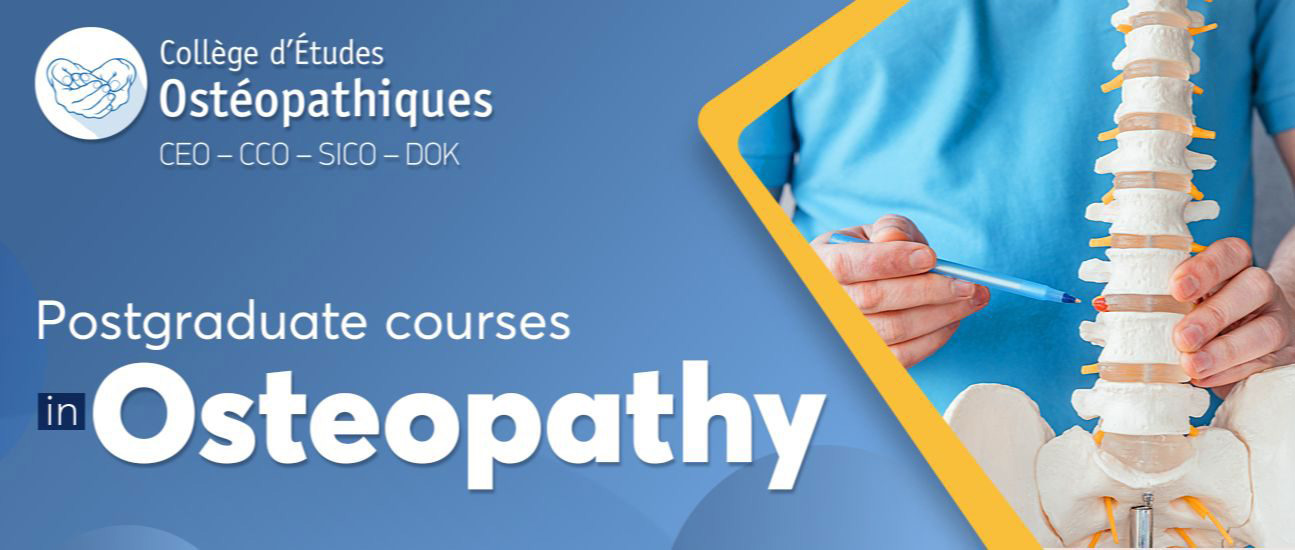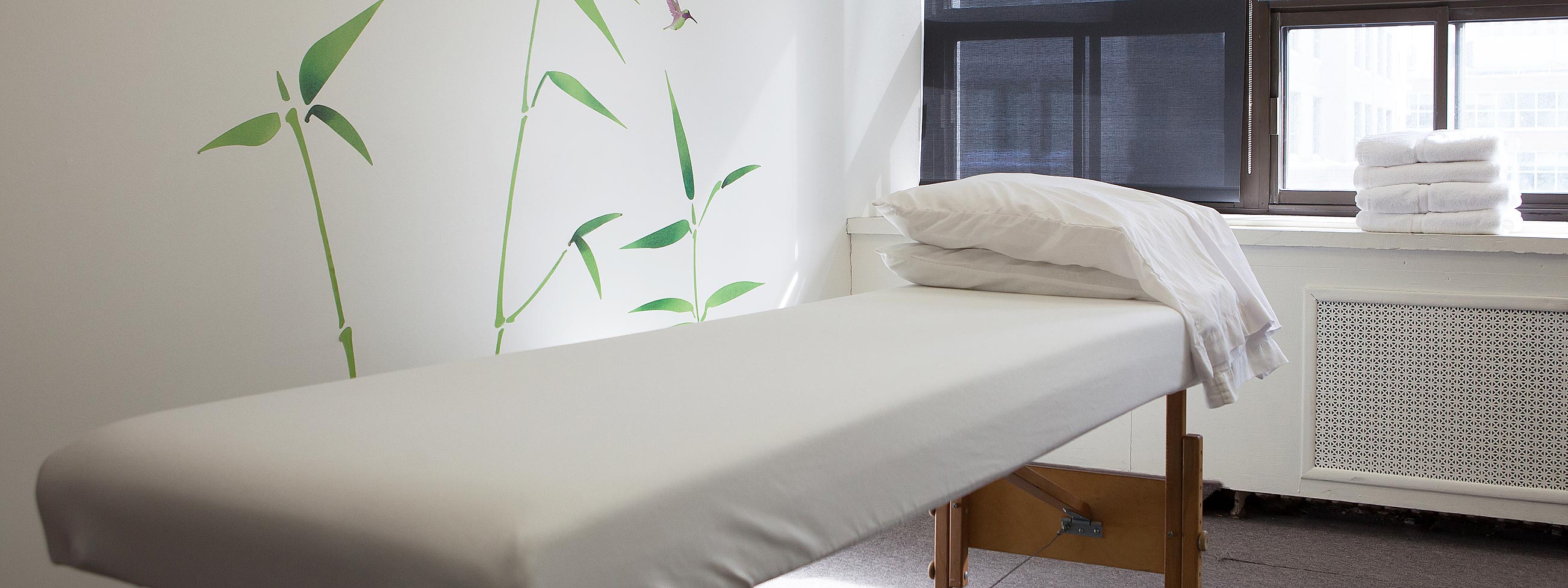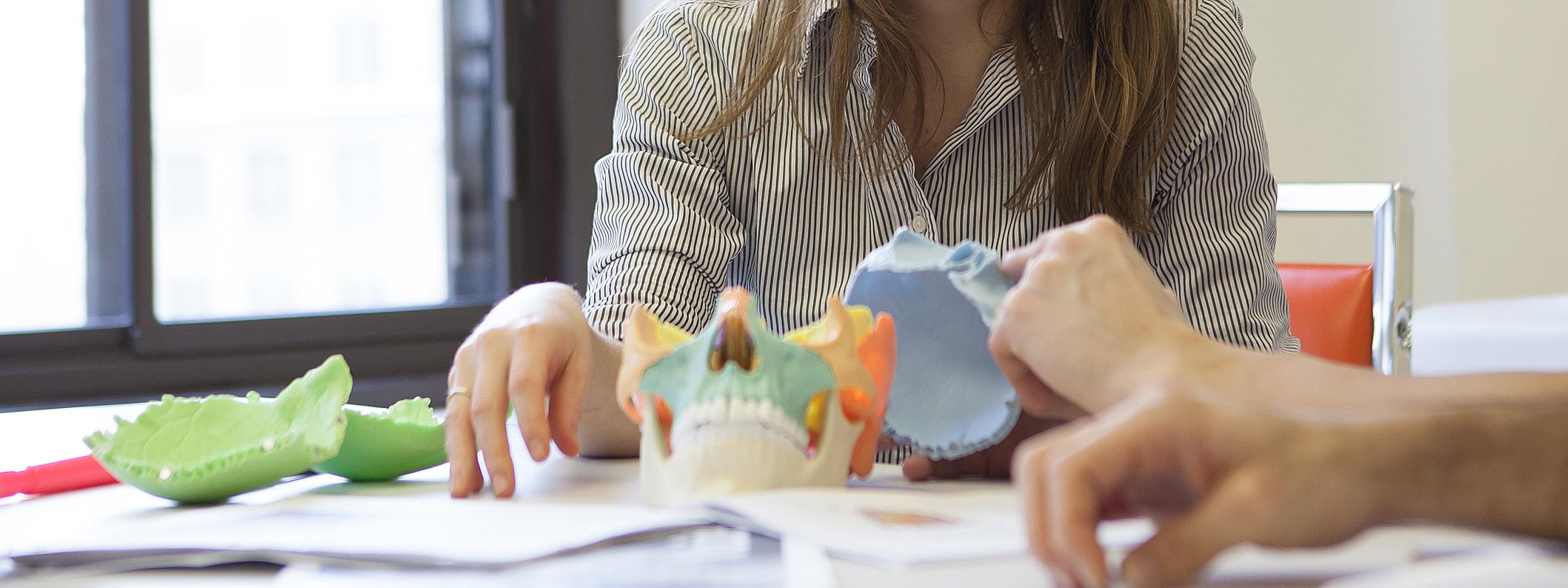Continuing education courses are aimed at osteopaths and students of the CEO, CEOQ, CSO, CCO, SICO, DOK as well as members of Ostéopathie Québec (OQ), members of the FROP and osteopaths who have completed a program equivalent to that of the CEO or abroad (at the discretion of the CEO).
Take note that a
Postgraduate courses
You can search by the name of one or more cities.

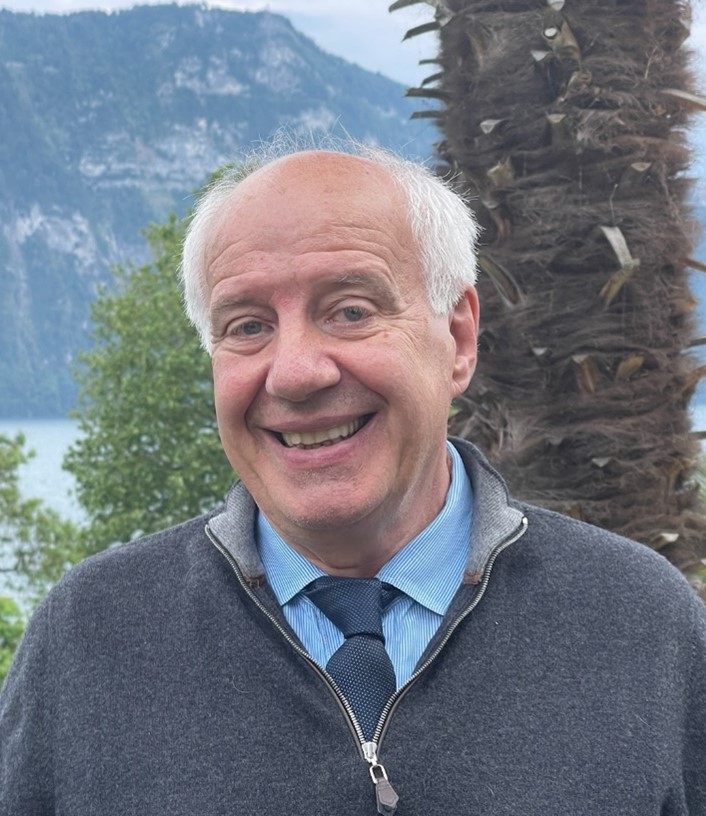
Philippe Druelle, DO
The brain, neuroplasticity and the effectiveness of osteopathy in treating patients with concussion, head and spinal cord injuries (Endocranial spasms, stage I)
- Date: June 26 to 29, 2025
- Prerequisites: D.O., D.O.M.P. Student 5th year and more
- Language: French (translate in English)
- Code: SECM01
Course Description
The brain, neuroplasticity and the effectiveness of osteopathy in treating patients with concussion, head and spinal cord injuries (Endocranial spasms, stage I)

Many of our patients have had injuries in car accidents, at work or in sports, or children have had difficult births or intra-uterine compressions, etc... All of these patients present sequalae, disabilities and different types of pain that can last for years. This seminar will provide you with solutions, whether the symptoms are moderate, acute or chronic. This course is very useful in our daily practice to treat cerebral dysfunctions following concussion and head trauma. It will enable you to improve brain dynamics, vascularization and ventricular activity following a traumatic lesion causing numerous symptoms.

PROGRAM
Objectives:
This
seminar
is
practice-oriented.
It
enables
participants
to
directly
assess
and
treat
the
dynamics
of
the
different
parts
of
the
brain,
its
functional
activity
specifically
and
globally,
as
well
as
the
cord,
enabling
better
health
of
the
functions
dependent
on
these
regions,
both
physically
and
behaviorally,
improving
neuroplasticity
and
the
disappearance
of
symptomatology.
The
aim
is
for
each
participant
to
be
able
to
use
the
content
of
the
course
in
his
or
her
own
practice
to
bring
relief
to
patients.
Program
content:
Philippe
Druelle,
D.O.,
founder
of
this
approach,
is
internationally
recognized
for
his
work
in
osteopathy
and
for
the
techniques
he
has
developed
since
1982
to
restore
cerebral
physiology
to
health.
Theoretical part
- Description of the elements required for good neuronal plasticity. Definition of the five different types of endocranial spasm (traumatic, emotional, clinical applications for infants, young children and adolescents (neuro-functional, cognitive, behavioral disorders), transgenerational and civilizational influences that also modify the patient's neuropsychology).
- Neuroplasticity as an important factor in chronic and acute pain and osteopathic outcomes.
- The brain's systemic activity and self-regulation (experimentation with Yuri Moskalenko PhD and Alexander Chepolvanikov PhD at the Shvenov Institute).
- The importance of VASOMOTION. Preparing for osteopathic treatment by ensuring good cerebral vascularization. List of strategic sites to check.
- Presentation of a model for understanding the relationship between the biomechanics of the dura mater and its attachments versus the biodynamics of the fluids, balance and bioenergy.
- The notion of anchoring and its importance after trauma (the notion of inertia and injury).
Practical part
- Assessment methods, objective and subjective signs and their importance according to the patient's health, to build a treatment plan best suited to the patient's condition.
- Checking strategic sites related to cerebral vascularization +++
- Cerebral hemisphere and corpus callosum dynamics. Mobility of each lobe and synergy with the lamina terminalis according to embryological development.
- How to develop palpation and the notion of a sphere, and how to adapt this concept to each level of work.
- The dynamics of the lateral ventricles and the limbic and thalamic systems, the hypothalamus and pituitary gland, the 3rd ventricle and cerebral self-regulation.
- Post-concussion regeneration techniques for the brainstem and autonomic nervous system, including the vagus.
- Lateral ventricles and increased systemic activity of the brain.
- Synergy of different tracts including the internal capsule and interactions with the fissures and insula.
- The importance of the carotid siphon and vascularization of the middle cerebral artery.
- The free flow of fluids and energies and vascular dynamics in the brain and spinal cord. The fluid waves of the cord according to Ann Wales DO.
- Techniques to regenerate the tissue matrix after concussion, to restore the circulatory pump between the superficial and deep vessels.
- How to guide these patients towards health and clinical methodology.
- Target organ treatments. For example, the links between brain and heart, intestines, liver etc....
Concussion-related topics
- We added to the program the self-regulatory system of the vagus nerve, which anastomoses with numerous brain sites and nerves in the brain such as V and VII, as well as the care of target organs that may become dysfunctional as a result of endocranial spasm, its role in pain, the inflammatory process and immune defenses.
- Introduction of the role of emotions and stress in the treatment of concussion. The psycho-visceral aspect, or the influence of viscera on brain dynamics.
- The importance of vascularization and spinal cord compression in chronic symptoms.
- The importance of fluid flow and CSF in brain tissue regeneration.
- Integration of our work on a case-by-case basis.
- Tips for successful treatment of the encephalon, depending on the patient's severity.
This is an exciting workshop, as it allows you to interact with the different parts of the nervous system in a precise, rational and efficient way. This workshop focuses on methodology and clinical applications to facilitate the integration of this program into daily practice. Part of this teaching will also address the physical and emotional imprints that limit the creation of new circuits in the brain matter. The relationship between tissue memory and the patient's true nature will also be taught in the second course on endocranial spasms and brain damage due to stress and emotions, stage 2. The date of the next Stage 2 course will be announced shortly.
Biography
Philippe
Druelle
DO
has
been
teaching
and
practicing
osteopathy
for
over
42
years.
An
international
lecturer,
he
is
much
appreciated
for
the
solutions
he
brings
to
osteopaths.
This
course
has
been
given
regularly
in
10
countries.
He
is
the
founder
of
the
FCERO,
which
has
been
treating
handicapped
children
since
1984,
and
of
9
campuses
in
Canada
and
around
the
world
where
traditional
osteopathy
is
taught.
He
is
the
author
of
26
didactic
books
on
the
various
parts
of
the
training
program
and
co-author
of
2
university
bachelor's
degree
programs
in
Osteopathy.
Philippe
Druelle
D.O.,
teaches
several
specialties:
the
brain
and
neuroplasticity,
pediatrics
and
obstetrics,
osteo-articular
adjustments
using
Energetic
Impulse,
parenchyma
work
and
the
clinical
application
of
Breath
of
life
and
biodynamic
force
in
everyday
practice.
Etc...
This course will provide you with many solutions.
Additional information:
Course schedules: From 9h00 am to 18h00 pm
Location: Collge d'études Ostéopathiques, 550 Av. Beaumont suite 500, H3N 1V1 Montréal (Qubec)
- Price:
- 890.00$
- TPS
- 44.50$
- TVQ
- 88.78$
- Total
- 1023.28$


Philippe Druelle, DO
The brain, neuroplasticity and the effectiveness of osteopathy: Endocranial spasms of traumatic origin - stage I
- Date: September 4 to 7, 2025
- Prerequisites: D.O., D.O.M.P., and 5th year student (successfully completed)
- Language: English
- Code: SECV01
Course Description
The brain, neuroplasticity and the effectiveness of osteopathy
Endocranial spasms of traumatic origin - stage I
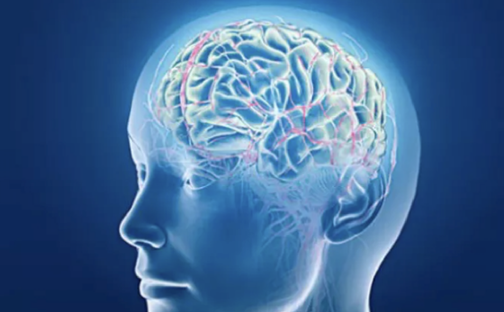 Treatment of concussions and the physical and behavioral sequelae of direct and indirect shocks from vascular, toxic and infectious injuries affecting the brain and spinal cord
Treatment of concussions and the physical and behavioral sequelae of direct and indirect shocks from vascular, toxic and infectious injuries affecting the brain and spinal cord
You will learn to work on the tissue, fluid and fields aspect of the matter, while specifically addressing the cord and brain dysfunction related to different kinds of impacts and influences. This work is greatly appreciated and valuable at any age; starting from newborns and infants following various impacts during fetal development, pregnancy and birth, through life’s various injuries and experiences including concussions and strokes, all the way to the consequences of the aging process and palliative care.
It’s still possible to get on board!
Definition of endocranial spasm
This name was given by Philippe Druelle, D.O. in 1982 to define an area of the brain affected or reacting to a direct or indirect physical, emotional, or transgenerational trauma of the brain and/or the spinal cord. This area becomes inhibited and dysfunctional with sequelae in the overall physiology of the body and human behavior.
Program
Philippe Druelle, D.O. will give an introduction to the different types of endocranial dysfunction in relation to the different levels of the subject, and present clinical methodology for alleviating lesions of the spinal cord and brain.
He will teach ways to appreciate and address the nervous, vascular and ventricular systems of patients with sequelae of physical, vascular or physical stress or trauma.
This workshop is exciting because it enables us to dialogue with the different parts of the brain in a precise, rational and effective way. It focuses on methodology and clinical applications to facilitate the integration of this program into everyday practice. Part of this teaching will also address physical and emotional imprints, the notion of anchoring described by Philippe Druelle and how to normalize them.
This seminar is highly appreciated, as it also enables participants to directly modify cranial and spinal dynamics, enabling healthier functions at both physical and behavioral levels.
Philippe Druelle, D.O., founder of this approach, is internationally recognized for his work in osteopathy and for the techniques he has developed since 1982 to increase the brain's systemic activity, the dynamics of the lateral ventricles and 3rd ventricle, the free circulation of fluids and energies, and the vascular dynamics in the brain and spinal cord.
Speaker
Philippe Druelle is known for the quality of his treatments by adapting to the needs of the patient. Osteoarticular techniques in osteopathy are different from those of other health professionals. The concept of energy is essential, and it is possible to perform these methods with ease and gentleness by guiding you step by step. A seminar rich in practice with concern for the integration of the method. Professor, author, researcher, international lecturer, and appreciated for 40 years, he had the chance to receive the teaching of the elders.
Additional information:
Course schedules:From 8h30 am to 17h30 pm
Location: CSO – Vancouver: 101-1150 Station St. Vancouver, British Columbia, Canada, V6A 4C7
- Price:
- 950$
- Total
- 950$


Philippe Druelle, DO
Stillness, fluid flow, breath of life, biodynamic force, bioenergy, and clinical applications. A quantum approach to osteopathy.
- Date: September 11 to 14, 2025
- Prerequisites: D.O., D.O.M.P., and 5th year student
- Language: English
- Code: BOLH
Course Description
Stillness, fluid flow, breath of life, biodynamic force, bioenergy, and clinical applications. A quantum approach to osteopathy.
This course has been very successful in integrating and using these concepts directly with the patient. Stillness, the manifestation of this universal energy described by Sutherland in 1948, is called the breath of life to describe this force that animates each element of the creation. We can enter in resonance, in contact with this vitality during the care we give to patients. This potentiates health mechanisms and physiology by giving a useful and exciting dimension to our work which gives another dimension to our care.Description We will first do a presentation on the nature of the stillness, of the breath of life, and on the modes of action of these two realities. How to perceive this presence, according to Rollin and Alan Becker, and Ann Wales. Definition and interactions of the fluid flow, the potency, the biodynamic force, the universal fulcrum, according to Becker and Schooley, the long tide and the life field, according to Robert Fulford. Definition and experimentation - clinical applications.
Practice flow At each step, we will check your progress at the level of sensations and palpation.
- Difference between stillpoint and stillness. Definition of the automatic shifting suspended fulcrum.
- Experimentation of stillness during different works on the matrix of the living matter at the level of the fluid flow in connection with the biodynamic force and the emotions, at the level of the articular balance and the fascia (Sutherland, Becker, Smith). Applications with somato-emotional imprints.
- Bioenergy is expressed when biomechanic and biodynamic realities are in balance and in constant dialogue. This allows for easy communication with the stillness and universal energy.
- Work at the level of the brain, the harmonization of the brain with the brain stem.
- Normalization of the spinal cord in resonance with the vagus nerve, according to embryology, to restore the fluid flow, the biodynamic force, and the plexuses, release the tensions on the arteries and veins of the spinal cord.
- Anne Wales - normalizations with the help of the breath of life for the spinal cord in case of inflammation and to regenerate the metabolism.
- Working with stillness and long tide, Becker and Frymann (etheric fields, electromagnetic force). Clinical indications.
- How to work with the breath of life and the universal fulcrum?
- How to erase the imprints of physical and/or emotional stress? Evaluate the difference.
- How to build a treatment plan with these notions and this learning?
- Awareness, decisions (patients).
- An evolving patient with an evolving osteopath.
Teaching and learning methods
- PowerPoint presentation
- Practical demonstrations
- Practice sessions after demonstrations
- Validation of palpation and work methodology
- Encourage the student to reflect and discuss the concepts presented and compare their perception of their practice with the information learned during this course.
Conclusion Philippe Druelle D.O. has progressed with these notions and the presence of these forces for many years having been taught by the elders. His conclusion is that osteopathy needs the whole osteopath to relieve the whole patient. Spirituality or the meaning of life is indispensable to progress simply at this level that everyone can acquire. We should not think osteopathy but live it.
Speaker Philippe Druelle is known for the quality of his treatments by adapting to the needs of the patient. Osteoarticular techniques in osteopathy are different from those of other health professionals. The concept of energy is essential, and it is possible to perform these methods with ease and gentleness by guiding you step by step. A seminar rich in practice with concern for the integration of the method. Professor, author, researcher, international lecturer, and appreciated for 40 years, he had the chance to receive the teaching of the elders.
Additional information:
Course schedules: From 8h30 am to 17h30 pm
Location: Dalhousie University - Student Union Building, 3rd Floor, room 303, 6136 University Avenue, Dalhousie, Nova-Scotia
- Price:
- 950$
- Total
- 950$


Philippe Druelle D.O.
Encephalon Dynamics: Endocranial spasms of traumatic origin - stage
- Date: September 18 to 21, 2025
- Prerequisites: D.O., D.O.M.P. who have done stage I
- Language: French (translated in English)
- Code: SECM02
Course Description
Encephalon Dynamics and Endocranial Spasms Endocranial spasms of traumatic origin stage II
Our patients, following emotional shocks and stress, develop numerous pathologies, pain, dysfunctions, chronicity and a lowered immune system.The brain and its systemic activity are often the source. In constant contact with the target viscera, with the help of the vagus nerve and its 12 anastomoses in the brain, it manages our body's balances and needs.
Numerous discoveries we'll be talking about during the seminars show that a mosaic of places in the body respond precisely to fears and conflicts. We'll give you the charter for this recent work.
In osteopathy, we have powerful tools to help patients spontaneously become aware and make decisions. The areas affected by these emotional shocks show disturbances in liquids and fluids. Sutherland had already said that liquids can be damaged in the same way as the solid parts of our bodies.
The results are excellent, and we have new tools so that people who have already attended these courses can come back and progress.
It's an exciting course that allows us to understand a large part of the process that affects the brain. We'll look at strategic zones, periventricular zones that work with the vagus nerve and regulate brain waves (depression and epileptic seizures), and methods for stimulating systemic activity and brain self-regulation.
We're delighted to welcome you to this exciting new stage in the College's new premises at 550 Beaumont on the 5th floor.
As you'll read in the program, you'll be introduced to numerous methods and techniques for normalizing the brain and its dynamics, as well as the target organs, to relieve pain and dysfunction and enable your patients to make resets for a better life.
Additional information:
Course schedules: From 9.00 am to 6.00 pm
Location: Collège d'études Ostéopathiques, 550 Av. Beaumont suite 500, H3N 1V1 Montréal (Québec)
- Price:
- 890.00$
- TPS
- 44,50$
- TVQ
- 88,78$
- Total
- 1023,28$

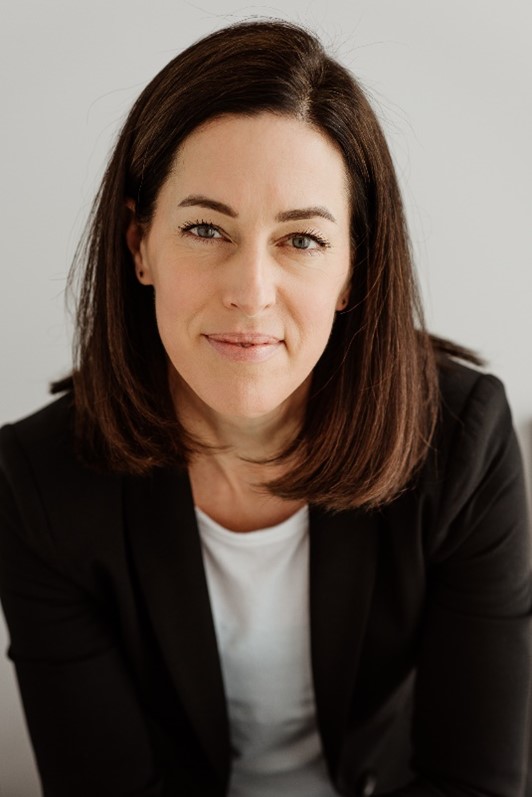
Pascale-Julie Robinson, DO
Postgraduate Training in Pediatric Osteopathy
- Date: October 2 to 5, 2025
- Prerequisites: D.O., D.O.M.P. Student 5th year and more
- Language: English
- Code: OPV
Course Description
4-day workshop, focused on the clinical evaluation methodology that gives you the basic keys to structure your daily intervention with pediatric clients. The training workshop is intended for osteopathic graduates and osteopaths who wish to consolidate complementary knowledge in perinatal and pediatric osteopathy.
The following themes will be addressed (3 days):
- Overview of the subjective assessment specific to the pediatric clientele (anamnesis);
- Objective assessment of the newborn (Amiel-Tison observation & routine);
- The methodology of objective assessment by age group (6 months and above);
- Postural observation and the walking pattern;
- Specific evaluation of the pelvis, spine and lower limbs;
- Clinical methodology (osteopathic techniques);
- Classroom consultations to integrate the concepts covered;
- Discussion focused on intervention in the clinic: information to give to parents, advice, exercises and positioning.
Clinical
Day
(October
5th):
The
last
day
of
training
will
be
a
clinical
day
where
we
will
receive
newborns,
infants
and
young
children
in
class
to
integrate
the
masterful
component
with
the
clinical
component.
It
is
an
opportunity
for
the
participant
to
observe
real
consultations
and
to
give
feedback
on
them.
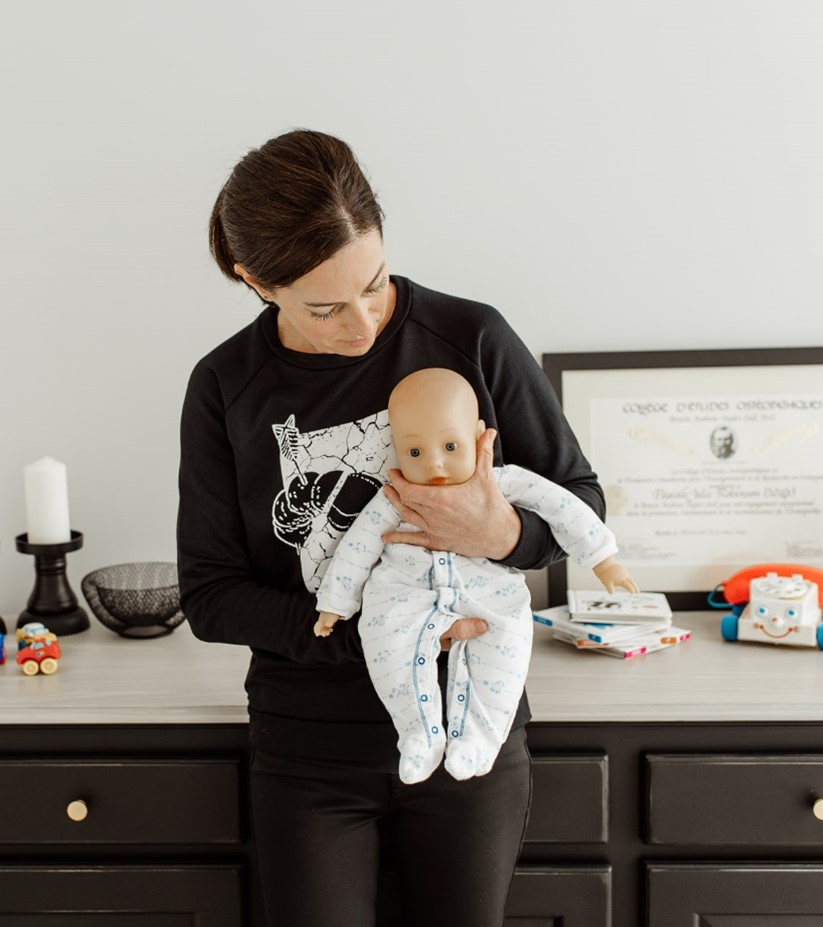
Pascale-Julie Robinson, D.O. (QC) is a graduate of the Collège d'études ostéopathiques de Montréal (2004). Teacher since 2006 at the same college for the pediatric lecture, clinical, paraclinical and children's days of the FCERO. Teacher since 2015 internationally (Germany, France, Poland and Brazil), for post-graduate training in pediatric osteopathy. Clinician with pediatric and family clientele for 20 years in Montreal. Passionate about this clientele, she has followed many post-graduate training courses in pediatric osteopathy in recent years to be on the lookout for the latest approaches in this field. Looking forward to talking to you!
Additional information:
Course schedules: From 8h30 am to 17h30 pm
Location: CSO Vancouver: 101-1150 Station St. Vancouver, British Columbia, Canada, V6A 4C7
- Member Price:
- 950.00$

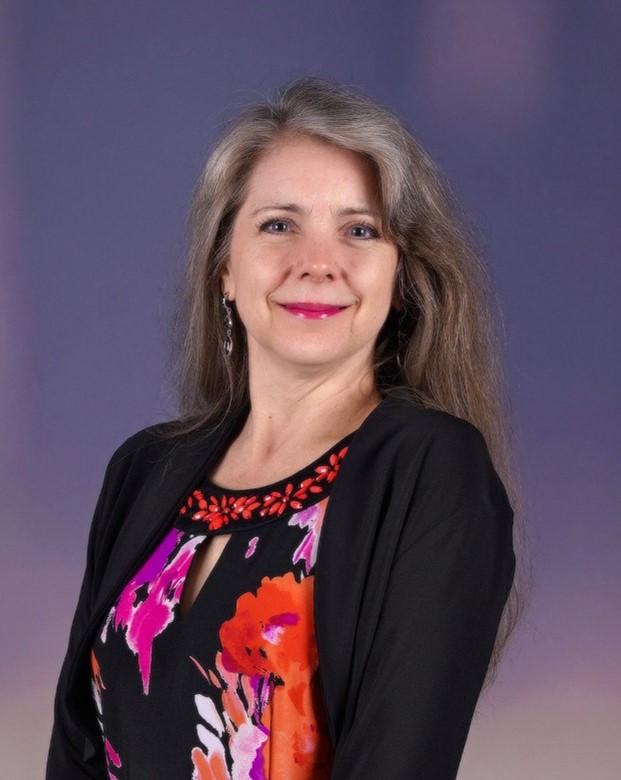
Genevive Forget, DO
Encephalon Dynamics and Endocranial Spasms - Endocranial spasms of traumatic origin stage II
- Date: October 16 to 19, 2025
- Prerequisites: D.O., D.O.M.P. who have done stage I
- Language: English
- Code: SEC02H
Course Description
Encephalon Dynamics and Endocranial Spasms - Endocranial spasms of traumatic origin stage II
Our patients, following emotional shocks and stress, develop numerous pathologies, pain, dysfunctions, chronicity and a lowered immune system.The brain and its systemic activity are often the source. In constant contact with the target viscera, with the help of the vagus nerve and its 12 anastomoses in the brain, it manages our body's balances and needs.
Numerous discoveries we'll be talking about during the seminars show that a mosaic of places in the body respond precisely to fears and conflicts. We'll give you the charter for this recent work.
In osteopathy, we have powerful tools to help patients spontaneously become aware and make decisions. The areas affected by these emotional shocks show disturbances in liquids and fluids. Sutherland had already said that liquids can be damaged in the same way as the solid parts of our bodies.
The results are excellent, and we have new tools so that people who have already attended these courses can come back and progress.
It's an exciting course that allows us to understand a large part of the process that affects the brain. We'll look at strategic zones, periventricular zones that work with the vagus nerve and regulate brain waves (depression and epileptic seizures), and methods for stimulating systemic activity and brain self-regulation.
We're delighted to welcome you to this exciting new stage in the College's new premises at 550 Beaumont on the 5th floor.
As you'll read in the program, you'll be introduced to numerous methods and techniques for normalizing the brain and its dynamics, as well as the target organs, to relieve pain and dysfunction and enable your patients to make resets for a better life.
Additional information:
Course schedules: From 8h30 am to 17h30 pm
Location: Dalhousie University - Student Union Building, 3rd Floor, room 303, 6136 University Avenue, Dalhousie, Nova-Scotia
- Price:
- 950$
- Total
- 950$


Philippe Druelle, DO
Stillness, fluid flow, breath of life, biodynamic force, bioenergy, and clinical applications. A quantum approach to osteopathy.
- Date: December 4 to 7, 2025
- Prerequisites: D.O., D.O.M.P., and 5th year student
- Language: English
- Code: BOLV
Course Description
Stillness, fluid flow, breath of life, biodynamic force, bioenergy, and clinical applications. A quantum approach to osteopathy.
This course has been very successful in integrating and using these concepts directly with the patient. Stillness, the manifestation of this universal energy described by Sutherland in 1948, is called the breath of life to describe this force that animates each element of the creation. We can enter in resonance, in contact with this vitality during the care we give to patients. This potentiates health mechanisms and physiology by giving a useful and exciting dimension to our work which gives another dimension to our care.Description We will first do a presentation on the nature of the stillness, of the breath of life, and on the modes of action of these two realities. How to perceive this presence, according to Rollin and Alan Becker, and Ann Wales. Definition and interactions of the fluid flow, the potency, the biodynamic force, the universal fulcrum, according to Becker and Schooley, the long tide and the life field, according to Robert Fulford. Definition and experimentation - clinical applications.
Practice flow At each step, we will check your progress at the level of sensations and palpation.
- Difference between stillpoint and stillness. Definition of the automatic shifting suspended fulcrum.
- Experimentation of stillness during different works on the matrix of the living matter at the level of the fluid flow in connection with the biodynamic force and the emotions, at the level of the articular balance and the fascia (Sutherland, Becker, Smith). Applications with somato-emotional imprints.
- Bioenergy is expressed when biomechanic and biodynamic realities are in balance and in constant dialogue. This allows for easy communication with the stillness and universal energy.
- Work at the level of the brain, the harmonization of the brain with the brain stem.
- Normalization of the spinal cord in resonance with the vagus nerve, according to embryology, to restore the fluid flow, the biodynamic force, and the plexuses, release the tensions on the arteries and veins of the spinal cord.
- Anne Wales - normalizations with the help of the breath of life for the spinal cord in case of inflammation and to regenerate the metabolism.
- Working with stillness and long tide, Becker and Frymann (etheric fields, electromagnetic force). Clinical indications.
- How to work with the breath of life and the universal fulcrum?
- How to erase the imprints of physical and/or emotional stress? Evaluate the difference.
- How to build a treatment plan with these notions and this learning?
- Awareness, decisions (patients).
- An evolving patient with an evolving osteopath.
Teaching and learning methods
- PowerPoint presentation
- Practical demonstrations
- Practice sessions after demonstrations
- Validation of palpation and work methodology
- Encourage the student to reflect and discuss the concepts presented and compare their perception of their practice with the information learned during this course.
Conclusion Philippe Druelle D.O. has progressed with these notions and the presence of these forces for many years having been taught by the elders. His conclusion is that osteopathy needs the whole osteopath to relieve the whole patient. Spirituality or the meaning of life is indispensable to progress simply at this level that everyone can acquire. We should not think osteopathy but live it.
Speaker Philippe Druelle is known for the quality of his treatments by adapting to the needs of the patient. Osteoarticular techniques in osteopathy are different from those of other health professionals. The concept of energy is essential, and it is possible to perform these methods with ease and gentleness by guiding you step by step. A seminar rich in practice with concern for the integration of the method. Professor, author, researcher, international lecturer, and appreciated for 40 years, he had the chance to receive the teaching of the elders.
Additional information:
Course schedules: From 8h30 am to 17h30 pm
Location: CSO – Vancouver: 101-1150 Station St. Vancouver, British Columbia, Canada, V6A 4C7
- Price:
- 950$
- Total
- 950$




